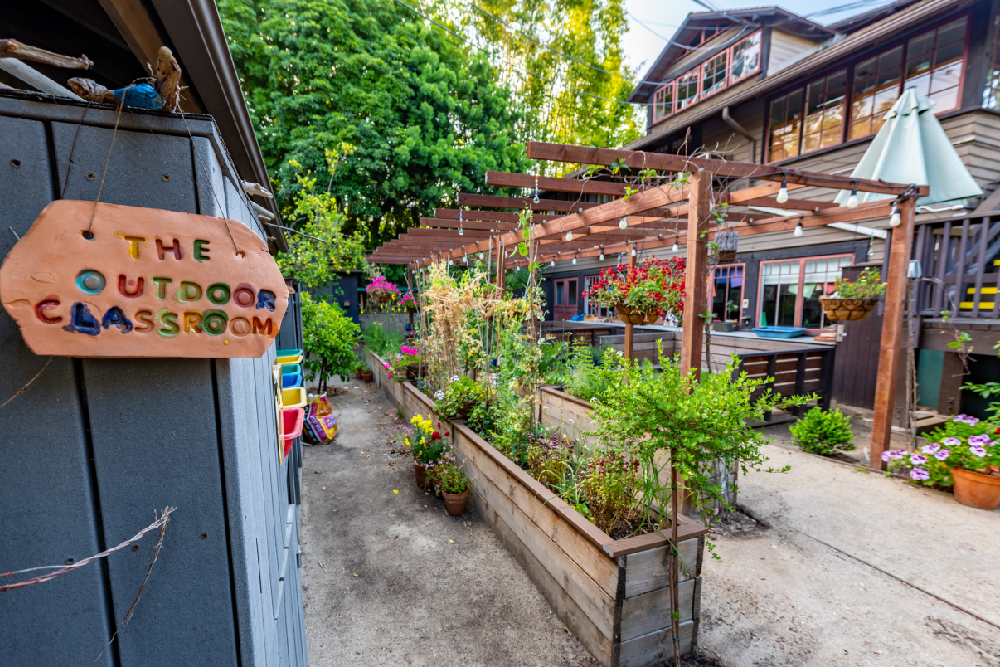
What makes Pacific Oaks Children’s School unique in how children learn?
Read our 2019-2022 Strategic Plan.
When you enter the Children’s School, you are transported to an enchanted time and place. Not only through the lavender plants, oak trees, and singing parrots, but also through the inclusive and open environment we’ve cultivated. Our expansive campus, just steps away from the Arroyo Seco trail, provides an ideal space for learning and exploration with tree shaded play areas, original 19th century Craftsman style homes, state-of-the-art play yards, a children’s library, an art studio, an Outdoor Classroom demonstration site and garden, and a neighborhood-like atmosphere.
We use an emergent play-based curriculum to educate children. Emergent means that the activities and set-ups are designed around the interests and developmental needs of the children in each program. Play based means that the learning takes place in an organic manner and is directly tied into the experiences that the children are having.
We believe children can understand anything if presented in the right way. An Ancient Chinese Proverb says, “I hear and I forget. I see and I remember. I do and I understand.” By exposing children to a variety of environments and encounters, rather than following a script, they learn to develop their own system of values and preferences. We teach children that no matter their size, their choices are validated—and with this self-agency, they learn values that will lead them to be their future selves. Children are empowered to use their voice, whether on the yard or in the classroom. Teachers facilitate and encourage the development of each student’s voice, passion, purpose, and self-expression.
Teachers focus first and foremost on developing a deeply rooted love of learning in each child. From the natural and diverse elements in the toys provided, to the focus on our outdoor environments, children are learning all the time through exploration.
Another characteristic that is planted and watered daily is emotional understanding and regulation. Children are encouraged to explore how they are feeling and to express this in a healthy manner. Teachers may not always step in, but rather monitor a child’s expression to allow the student to learn how to regulate both happy and upsetting circumstances. This is practiced with negotiation and delayed gratification techniques.
It is not unusual to see children disagreeing while in school. Less often noticed is the teacher an arm’s length away, observing and, if needed, facilitating a healthy negotiation for both. The teacher is not there to discipline or reign in a student’s expression in these circumstances, but rather use the moment as a learning experience for future negotiations.
Perhaps one of the most important characteristics of all interactions and explorations is resiliency. We believe children must start learning to be resilient from a young age. Things will not always go as expected or wanted—from the classroom to the living room to the conference room—and it’s important for children to learn to move forward through those disappointments. When something doesn’t go the way a child wants it to, we help explore why it didn’t work the way that we thought it would, and more importantly, what we can learn from this. This encourages the child to see an opportunity to try again and accept the failures that may come.
Through passionate examination and exploration, teaching conflict resolution and resiliency, we use every opportunity to facilitate honest dialogue. Although the world is changing all the time, the core roots of social justice and community responsibility help them understand the world, their place in it, and how they can change it.
